- Home
- Winston Groom
The Allies Page 21
The Allies Read online
Page 21
The people ate simply: borscht—a kind of beet soup—was a staple, as were stews, potatoes, cabbage, and bread. They drank beer and prodigious amounts of vodka, which could be easily distilled from potatoes. Stalin initially concluded in the 1920s that the manufacture of spirits should be phased out because alcohol was an affliction caused by the “duress of capitalism.” The theory was that Russians would be so happy under communism they would not need liquor. This did not work out well. Moonshiners were soon setting up shop all over the country, though if apprehended they were apt to be shot as “enemies of the state.”22
Russian authorities from the reign of Ivan the Terrible had been trying to stamp out moonshining, with little success. Stalin’s luck was no better. The moonshiners defied him, and by one estimate there were at least a million stills in operation. As the writer Kevin Kosar puts it, “Stalin himself drank heavily and soon came to realize the folly of his teetotal fantasy.” Stalin soon ordered the state to begin producing alcoholic spirits.*723
By the late 1930s so many millions of people were in the labor camps that they posed a formidable workforce for major projects. Stalin’s great push was for infrastructure: dams, canals, roads, airports. It had come up in a Supreme Council meeting that many of these people were eligible for early release, but Stalin overturned that notion with a summary order. “All will serve the full sentence.” He needed this vast slave army for his prodigious projects. Scientists, engineers, intellectuals, writers, musicians, and artists were long suspected to be counterrevolutionaries by nature, and enormous numbers of them had been sent to the labor camps. Stalin realized the waste of talent and so had the scientists and engineers, at least, isolated and given better food, private quarters—even women—to keep them comfortable while plying their various fields of talent for the state. One of Stalin’s favorite sayings was “Be happy in your work.”
One of the most dire consequences of Stalin’s purge of so many talented army officers was that the upstart fascist Adolf Hitler, who was assembling an offensive military machine of prodigious dimensions, became an even greater threat to the depleted Soviet military. Despite the fact that both Soviet communism and German fascism were monolithic political systems thriving on the cult of a dictator, they were natural enemies, abhorrent as a mongoose is to a cobra.
From his lofty perch in the Kremlin, Stalin had kept a wary eye on Hitler as he first reoccupied the demilitarized Sudetenland, then corralled Austria into Greater Germany, and in 1939 went after Czechoslovakia while the British and the French sat by and watched. Stalin understood that Hitler wanted to give the Germans “breathing space” with these expansionist policies, but he didn’t want Russia to be a part of it. Just how far Hitler intended to go couldn’t be guessed. Poland was certainly on the list, Stalin assumed, as well as the Baltic states, and he could never be sure that Russia wasn’t too.
One thing for certain was that the German military might—on the ground, in the air, and on the seas—had sprung up with alarming alacrity from utter devastation following the First World War, and Russia couldn’t match it. It was clear to Stalin that even if he started a Soviet buildup at once, all indications were that he would never be able to catch up. He knew he needed to buy time, and was wondering how that might come about, when a gift dropped into his lap. The gift was Joachim von Ribbentrop, who arrived in Moscow in August 1939 to conclude a mutual nonaggression pact with the Soviet Union.
The treaty was a godsend for Stalin, the groundwork of which was laid by the Soviet foreign minister Molotov and his German counterpart von Ribbentrop, whose prewar diplomatic machinations would have put Machiavelli to shame. Molotov had actually first sought to secure from Britain and France a mutual defense pact against Germany—but at the time, the two democracies deeply distrusted Stalin and his secretive, authoritarian state.
The Nazi-Soviet pact at first caused understandable confusion among the Communist underworld in Europe and the United States. The party’s news organ the Daily Worker, for instance, went overnight from trumpeting Nazi Germany as the U.S.S.R.’s archenemy to praising it as Russia’s best friend, leaving many Red operatives and fellow travelers collectively shaking their heads.
Still, the treaty met Stalin’s purpose. He doubled and redoubled again his armaments output, putting factory after factory under military supervision. Not only that, but a codicil of the pact arranged for the Soviets to divvy up the spoils when the Nazis invaded Poland. Likewise, it allowed the Soviets to gobble up the Baltic states, which they eventually did, one by one. Still, Stalin was less than ready in 1941 when Hitler broke the agreement in a vast surprise attack all across Russia’s Western Front. But by then the pact had bought Stalin time that was not just precious but priceless.
Stalin knew that a war between the two totalitarian states was inevitable. He was determined to attack Germany first. Hitler beat him to the punch in June 1941 with Operation Barbarossa. After the fierce campaign in Greece and the Balkans, the Nazis reassembled their horrendous military machine at the Soviet border and began flying reconnaissance missions to discover where the Russian army and air force were located. The Soviets formally complained about these flights, and Hitler’s government apologized, explaining that the German pilots sometimes got lost.
Evidence began to pile up that the Germans were planning to attack Russia; Stalin’s response was to put his head, ostrich-like, in the sand. Churchill personally warned Stalin when Ultra intercepts indicated unmistakable preparations for an attack. A famous Soviet spy in Japan sent a warning that was likewise ignored. Soviet intelligence submitted report after report that got nowhere. Even German deserters gave the exact time and place. Stalin simply refused to believe that Hitler would attack him while England still hung on in his rear. He convinced himself that the warnings were a capitalist trick to draw the Soviet Union into a war with Hitler.
When the blow fell on June 22—ironically, nearly the same date that Napoleon launched his career-ending march on Moscow in 1812—it fell heavily. Stalin had so imbued his staff and ministers with the idea that the Nazis would not go to war with him that the Soviets responded lamely when reports began coming in of Nazi armies crossing Russian frontiers and Nazi planes bombing Russian cities. Stalin at first instructed his foreign minister Molotov—who had his name on the Nazi peace pact—to get in touch with Ribbentrop. But all the lines to Berlin were down. Finally Marshal Georgy Zhukov, Stalin’s closest military adviser, convinced the boss that Russia was indeed under a full-scale attack by the Germans.24
Stalin declared that the enemy must be “crushed,” then retired to his dacha in a catatonic breakdown for nearly a week before collecting himself. He used the occasion of his recovery to solidify absolute power in the Kremlin, making himself the “Supreme,” the one and only leader of the military.
The fighting became furious and vicious as the Russian resistance stiffened. Stalin’s orders were to fight to the last man, and many did just that, dying with the name of their leader on their lips. By July 2, eleven days into the blitzkrieg, 2 million Russian soldiers had been killed. Hundreds of thousands of others, including Stalin’s son Yakov, a lieutenant in an artillery brigade, were taken prisoner and shipped back to Germany as slave laborers. Since Stalin had sent an edict to all soldiers that surrendering would cause “serious problems” with the prisoner’s family, he was at first infuriated to learn of Yakov’s capture and was reported to have said, when asked, “I have no son.”*825
Horrible atrocities were inflicted upon Russian civilians, in particular women, who were raped in countless numbers—often being shot afterward. Homes were looted and burned, pets and farm animals were killed.
The Germans got to within twenty miles of Moscow before Stalin’s armies brought them to a halt. Officials had convinced Stalin that the city needed to be evacuated and measures were taken—files and archives burned, extra trains running night and day. The body of Lenin, which had been on display unde
r glass since his death in 1924, was packed up to be moved. But even as Lenin’s corpse left on a special train, at the last moment Stalin decided not to go. He defied everyone who pleaded for his safety and went to his office at the Kremlin, where one could hear the rumble of artillery and tanks fighting to the death. Miraculously, the Russian army held on until the snows and freezing weather stopped the Germans cold for a time.
Leningrad (formerly St. Petersburg—home to the czars) was subjected to a German siege that lasted nine hundred days. The electricity and the water for a million people were cut off; toilets would not flush, and the weather turned freezing. People were starved, reduced to a diet of cat meat and cannibalism. Before it was over, an estimated eight hundred thousand civilians would be dead.
An enormous German push was made in the south against Stalingrad (known as Tsaritsyn until 1925), which was key to Caucasus oil and Ukrainian wheat that the Nazis sorely needed. Again, Stalin ordered that his army fight to the last man, and they very nearly did. But then Stalin did what he did so well in the war: he suddenly produced brand-new divisions, one after the other, that he’d had training beyond the Urals. They came with the battle-proven T-34 tank that Stalin’s factories had been turning out by the thousands after he had moved them entirely beyond the reach of the enemy.
By the winter of 1941 the German blitzkrieg had been halted. Big battles would rage in Russia after 1941, and 1942, and 1943. But the Russian winter had taken its toll on the invaders. So, too, had Russian cooperation with the British. Even though Stalin continued his futile demands for Great Britain to invade France and start the vaunted “second front,” the munitions, planes, and other war matériel sent to him by Churchill were invaluable during those first crucial months after the Germans attacked. Soon, a far greater pipeline of supplies would open to Stalin. The Japanese attack on Pearl Harbor at the end of 1941 brought the United States into the war as an official ally.
On June 28, a week after Hitler launched Operation Barbarossa, Roosevelt sent his troubleshooter and right-hand man Harry Hopkins to Moscow with a letter to Stalin. For his part, Hopkins found himself enthralled by the Man of Steel, who looked upon the United States as a misbegotten den of thieves and exploiters ripe for conversion. “No man could forget the picture of the dictator of Russia,” Hopkins wrote, “an austere, rugged, determined figure in boots that shown like mirrors, stout baggy trousers, and a snug fitting blouse. He wore no ornament, military or civilian. He’s built close to the ground, like a football coach’s dream of a tackle. He’s about five feet six, about a hundred and ninety pounds. His hands are huge, as hard as his mind. His voice is harsh, but ever under control. What he says has all the accent and inflection his words need.”26
Hopkins did not mention that Stalin’s face was disfigured by smallpox scars, that he had a withered left arm and a clubfoot that caused him to walk in a kind of roll. Perhaps Hopkins didn’t want to detract from the heroic figure he had just portrayed, for Stalin was to be an important ally in the coming years.27
The official letter was addressed to “My Dear Mr. Stalin” and expressed the “great admiration all of us feel in the United States for the superb bravery displayed by the Russian people in defense of their liberty.” It went on to offer all available assistance for war materials.
Stalin did not answer Roosevelt’s letter formally but sent his reply through Hopkins with an effusion of flattery, honoring Roosevelt, the government of the United States, and the people of the United States as kindred spirits who shared Russia’s hatred of Hitler and Hitlerism. And he said the thing that Churchill had been praying for: “The one thing that could defeat Hitler, and perhaps without firing a shot, would be an announcement that the United States was going to war with Germany.” Stalin added that he would “welcome American troops on any part of the Russian front.” Finally he told Hopkins he was “confident that the Russian army could withstand the German army,” but that they would need American supplies.
He would get them in spades.
*1 She was Fanya (Fanny) Kaplan, a disgruntled twenty-eight-year-old Jewish member of a rival socialist group. Four days later, after interrogation by the Cheka, she was executed.
*2 Lenin’s wife visited the tomb frequently over the years, once remarking plaintively to a friend, “I am getting old, but he is just the same.”
*3 Lenin’s remains have lasted nearly a century and still look remarkably good, according to all accounts. In the 1930s, responding to an American newspaper’s assertion that the figure in Lenin’s casket was actually a wax doll, Stalin had the glass sarcophagus opened and the body of the leader manipulated in such a way as to show it really was him.
*4 It has been estimated that at least one-third of the one hundred thousand workers digging the White Sea Canal died on the job.
*5 This appears to be the first mention of the expression “American exceptionalism.”
*6 Roosevelt’s diplomats received assurances from Soviet representatives that large U.S. debts run up by the Russian government in World War I would be repaid, and that the Soviets would stop sending agents to infiltrate the U.S. government and stir up trouble. As soon as diplomatic recognition was accomplished these assurances evaporated.
*7 It has been estimated that about 25 percent of Russians drank illegal moonshine, which was about half the cost of government liquor.
*8 The author could find no direct evidence that Stalin said this, but in fact when the Germans contacted him trying to trade Yakov for a captured Nazi general Stalin refused, saying no lieutenant is worth a captured general. Yakov apparently committed suicide after two years by deliberately walking in a dead zone. A guard shot him in the head.
CHAPTER EIGHT
From his first days in Washington, Franklin Roosevelt delighted in his position as the assistant secretary of the Navy. It was a post he’d coveted ever since his cousin Theodore used it as a springboard to win the governorship of New York, and from there the presidency: a powerful job with magnificent perks and a lot of press exposure. Josephus Daniels, the secretary, was a hands-off boss and allowed young Franklin, for all intents, to run the department.
Roosevelt faced a colossal task, especially after the First World War broke out in Europe. American ships were dispatched in the far-flung reaches of the world, many of them woefully out of date; some of them harked back to the days of the Spanish-American War. For three tense years the United States stayed haughtily out of the ever consuming conflict. As an adviser on politics and other matters, Roosevelt had brought to Washington the gnome-like newspaperman Louis Howe.
In 1915 a German submarine sank the British ocean liner Lusitania, killing 1,198 passengers and crew including 128 U.S. citizens. Many Americans, including Roosevelt’s cousin Teddy, felt strongly that the United States should enter the war on the side of the Allies. But President Woodrow Wilson scotched that idea shortly afterward when he gave a speech declaring, “There is such a thing as a man being too proud to fight. There is such a thing as a nation being so right that it does not need to convince others by force that it is right.”
This was soothing news to the ears of midwestern farmers’ sons, Polish factory workers, Irish laborers, and others who would be called upon to do the fighting; it was also getting on to an election year and Wilson knew it would play well with the isolationist crowd.1
Roosevelt was disgusted, and he continued to preach preparedness and expansion of the Navy at every opportunity. But Wilson’s noninterventionist policy kept the military in shackles throughout the early years of the war. Since early childhood, Roosevelt had spent a great deal of time in the countries that were now at war; he believed that a German victory would be a disaster for Europe and, ultimately, for the United States.
In the meantime, the Roosevelts had moved into a house on Washington’s N Street, near Dupont Circle, owned by Roosevelt’s aunt; there were four children by now. As in New Y
ork, they were swept up in the city’s society world that contained a mix of high-placed administration figures and members of Washington’s elite old guard (known as “cave dwellers” for the large homes they owned in Georgetown, as well as their plush apartments along Connecticut Avenue and other fashionable thoroughfares).
Roosevelt soon found himself a member of Washington’s swankiest clubs: the Metropolitan for in-town dining and parties, and the Chevy Chase for dress balls and golf. Eleanor felt uncomfortable in this highly charged social atmosphere, which, unlike the society scene in New York, often demanded extensive knowledge of diplomatic and national affairs. She found that she was required to give dinners and other entertainments for a variety of muckety-mucks, including senators, congressmen, ambassadors, and cabinet members.
What with all this, plus four children and another on the way, Eleanor felt she had need of a social secretary. The person she chose for the job was herself a fringe member of Washington’s high society: the tall and lovely twenty-two-year-old beauty Lucy Mercer.
Work at the Department of the Navy was not all sweat and toil for Assistant Secretary Roosevelt. With his excellent knowledge of boats and seamanship, he soon made himself comfortable among the high-ranking officers of the fleet, often taking the wheel of a destroyer or other warship in an impressive display of helmsmanship.
Roosevelt in his mid-thirties cut one of the most handsome figures in Washington, walking every morning to his office near the White House. Young women would often stop and stare, eager to get a glimpse of the dashing politician smiling, laughing, or simply looking pleasant. It was said that at dinners, parties, or balls he flirted shamelessly but no one—even his eagle-eyed, wicked-tongued cousin Alice Roosevelt Longworth, who lived around the corner—had suspicions of any impropriety on Franklin’s part. His was the ideal marriage: an attractive, attentive wife and a handful of lovely and precocious children, backed by money and power.

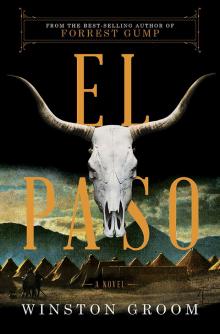 El Paso
El Paso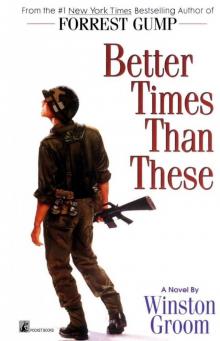 Better Times Than These
Better Times Than These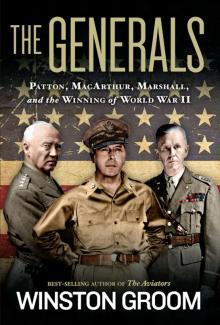 The Generals
The Generals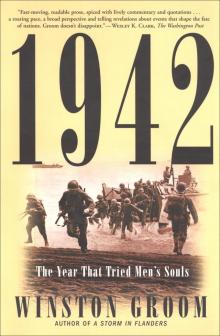 1942: The Year That Tried Men's Souls
1942: The Year That Tried Men's Souls Forrest Gump
Forrest Gump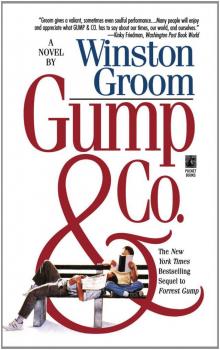 Gump and Co.
Gump and Co.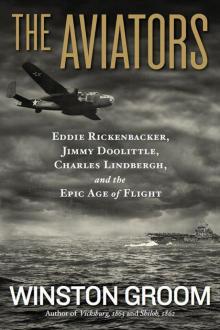 The Aviators
The Aviators Shrouds of Glory
Shrouds of Glory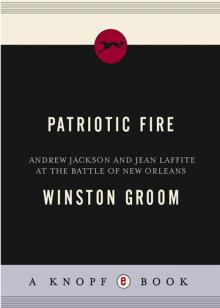 Patriotic Fire
Patriotic Fire Kearny's March
Kearny's March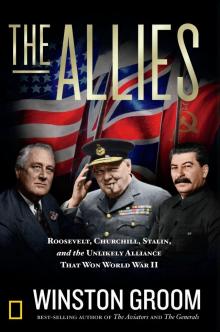 The Allies
The Allies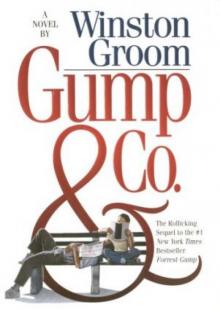 Gump & Company fg-2
Gump & Company fg-2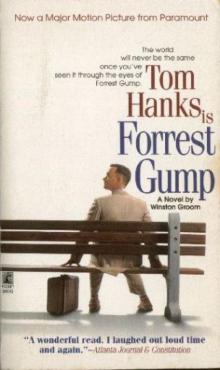 Forrest Gump fg-1
Forrest Gump fg-1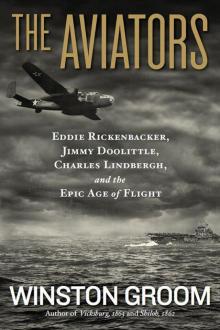 The Aviators: Eddie Rickenbacker, Jimmy Doolittle, Charles Lindbergh, and the Epic Age of Flight
The Aviators: Eddie Rickenbacker, Jimmy Doolittle, Charles Lindbergh, and the Epic Age of Flight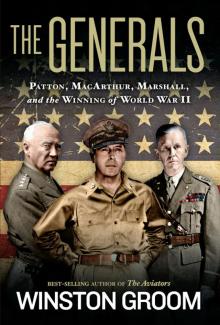 The Generals: Patton, MacArthur, Marshall, and the Winning of World War II
The Generals: Patton, MacArthur, Marshall, and the Winning of World War II